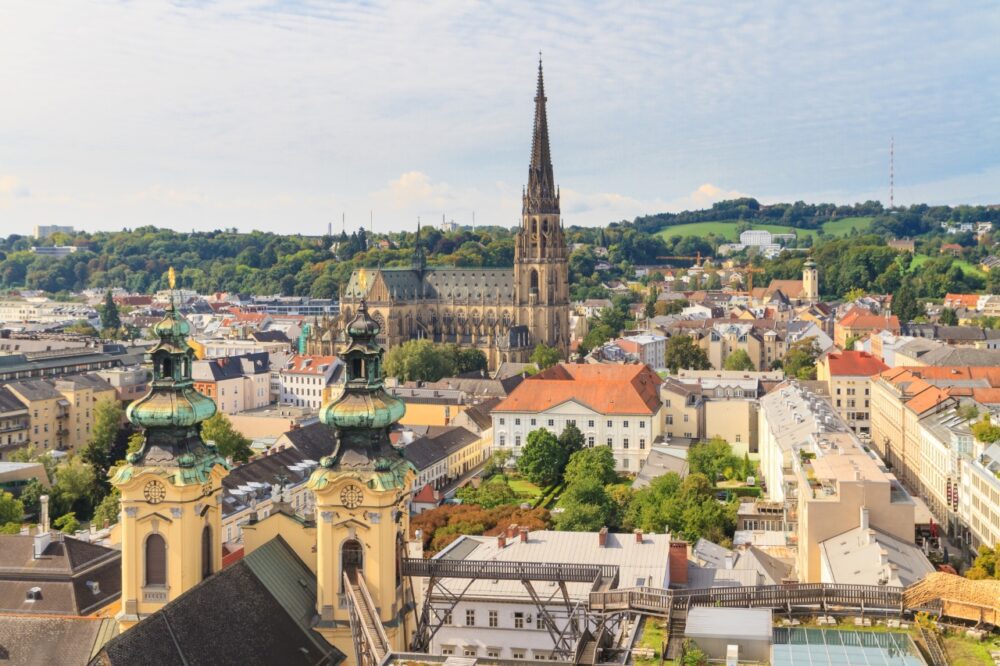
Is Linz worth visiting? In my opinion, it abolutely is! The first time I visited Linz, I was pleasantly surprised by how much this Austrian city has to offer. It’s a place where tradition meets innovation, with historic charm sitting alongside cutting-edge modernity. Walking through the city, I found myself moving from cobbled streets and baroque churches to contemporary art installations and sleek riverside spaces—all in one afternoon.
Located on the banks of the Danube River in northern Austria, Linz is a cultural hub known for its creative energy and vibrant arts scene. While it might not have the fame of Vienna or Salzburg, Linz more than holds its own with attractions like the Ars Electronica Center, the Lentos Art Museum, and the impressive Pöstlingberg hill. Whether you’re a history buff, a tech enthusiast, or just someone looking for something a little off the beaten path, Linz has something for every traveller. But is Linz worth visiting for you?
In this blog post, we’ll explore the top 10 reasons why Linz should be on your travel list, from its unique cultural offerings to its picturesque riverside setting. We’ll also include some handy travel tips to help you make the most of your visit. Keep reading, and you might just discover Austria’s most underrated city.
Table of Contents
Pros – Reasons You Should Visit Linz
1. A Fascinating Blend of Old and New
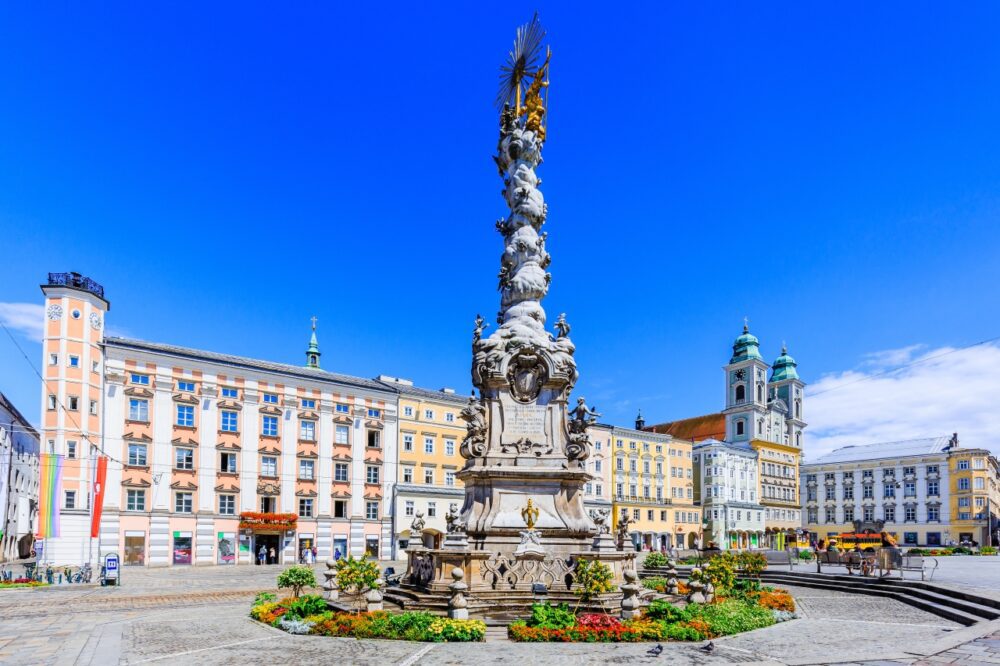
Linz is a city that effortlessly balances its historical charm with modern innovation. Unlike Vienna or Salzburg, which are deeply rooted in imperial history, Linz has embraced change and reinvention. The city’s Old Town is filled with Baroque architecture, historic churches, and cobblestone streets, while the newer parts of the city are home to cutting-edge architecture, contemporary museums, and a thriving tech scene.
I started my visit in the Hauptplatz, one of the largest squares in Austria, where grand historic buildings surround a central column. Just a short walk away, I found the Lentos Art Museum, a sleek and modern glass building showcasing contemporary art. This contrast between old and new makes Linz one of the most dynamic cities in Austria, offering something for history buffs and modern travelers alike.
2. The Picturesque Danube River Setting
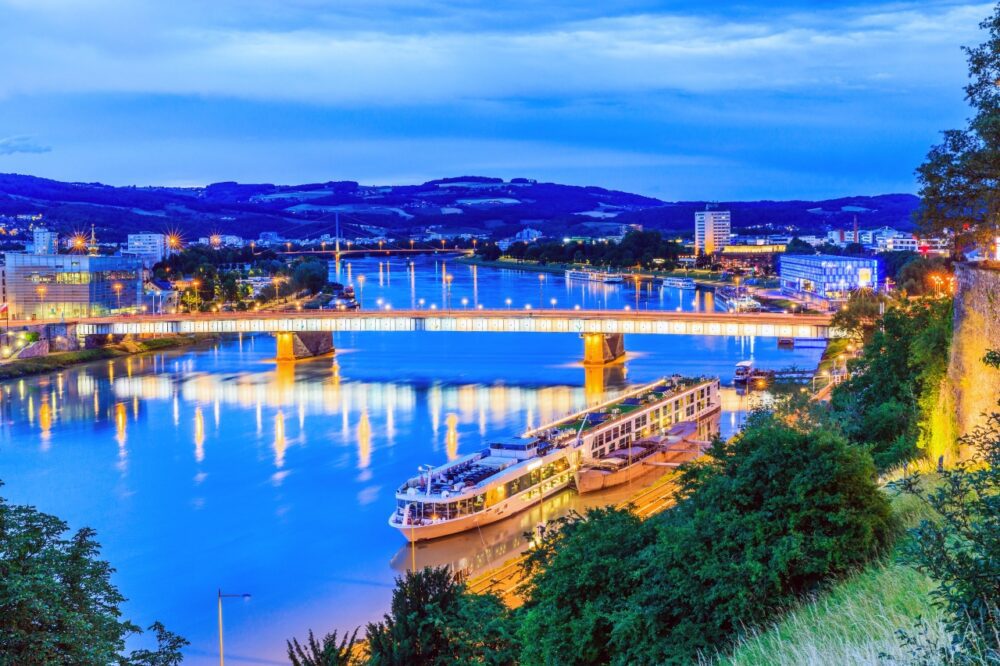
Linz sits on the banks of the Danube River, and the waterfront plays a big role in the city’s charm. The river provides beautiful walking and cycling paths, peaceful boat rides, and scenic viewpoints that showcase the city from a different perspective. The lively promenade along the river is a great place to enjoy a relaxed afternoon, with plenty of cafés, parks, and cultural spaces.
I took a river cruise at sunset, and seeing Linz from the water was an entirely different experience. The way the city lights reflected on the Danube was stunning, and the slow pace of the boat made it a perfect way to unwind. Whether you prefer walking, cycling, or just sitting by the water with a coffee, the Danube adds a calming presence to the city.
3. The Ars Electronica Center – A Futuristic and Interactive Experience
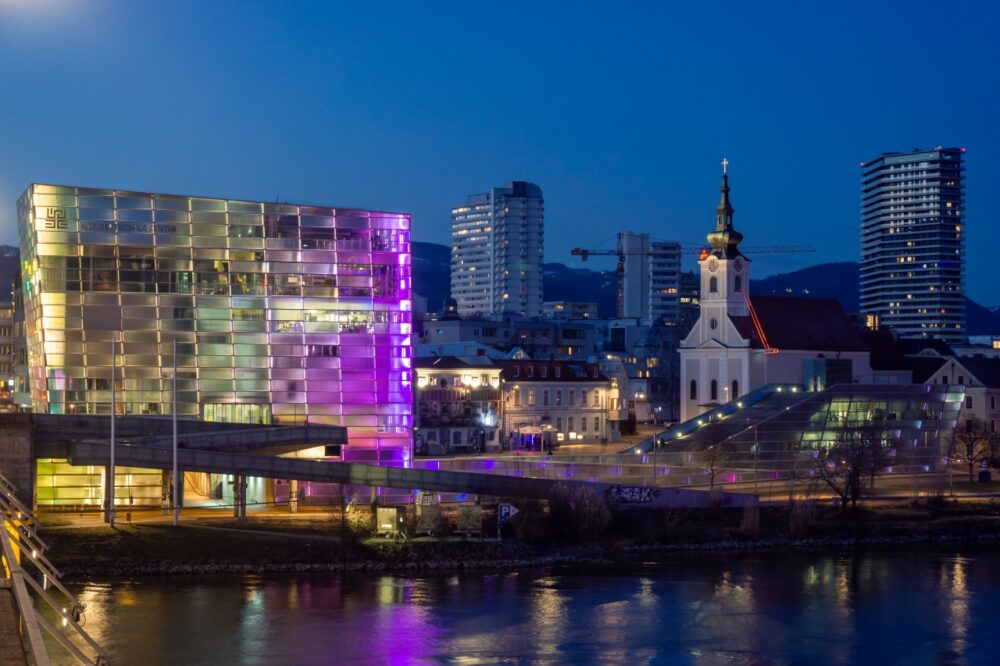
Linz has established itself as a city of technology and innovation, and the Ars Electronica Center is the best example of this. Known as the “Museum of the Future,” it offers hands-on exhibits that explore artificial intelligence, robotics, space technology, and digital art. The museum encourages visitors to interact with displays, making it one of the most engaging science museums in Europe.
I spent hours exploring the exhibits, testing out VR simulations, and even interacting with AI-powered robots. One of the highlights was the Deep Space 8K projection room, where I experienced a breathtaking visual journey through the universe. Even if you’re not a tech enthusiast, the Ars Electronica Center makes complex scientific topics accessible and fun, making it a must-visit in Linz.
4. A Vibrant and Underrated Cultural Scene
Linz has a thriving cultural scene, offering everything from classical concerts to modern art exhibitions. The Brucknerhaus, named after composer Anton Bruckner, hosts world-class musical performances, while the Lentos Art Museum features an impressive collection of contemporary and modern art. The city is also home to several theaters, independent galleries, and music festivals.
I visited Linz during the annual Ars Electronica Festival, which transforms the city into a hub of digital art and innovation. The combination of live performances, interactive installations, and creative energy made it one of the most exciting cultural experiences I’ve had in Austria. Even outside of festival season, Linz has a diverse range of artistic and cultural events that make it an exciting destination for creative minds.
5. The Stunning Views from Pöstlingberg
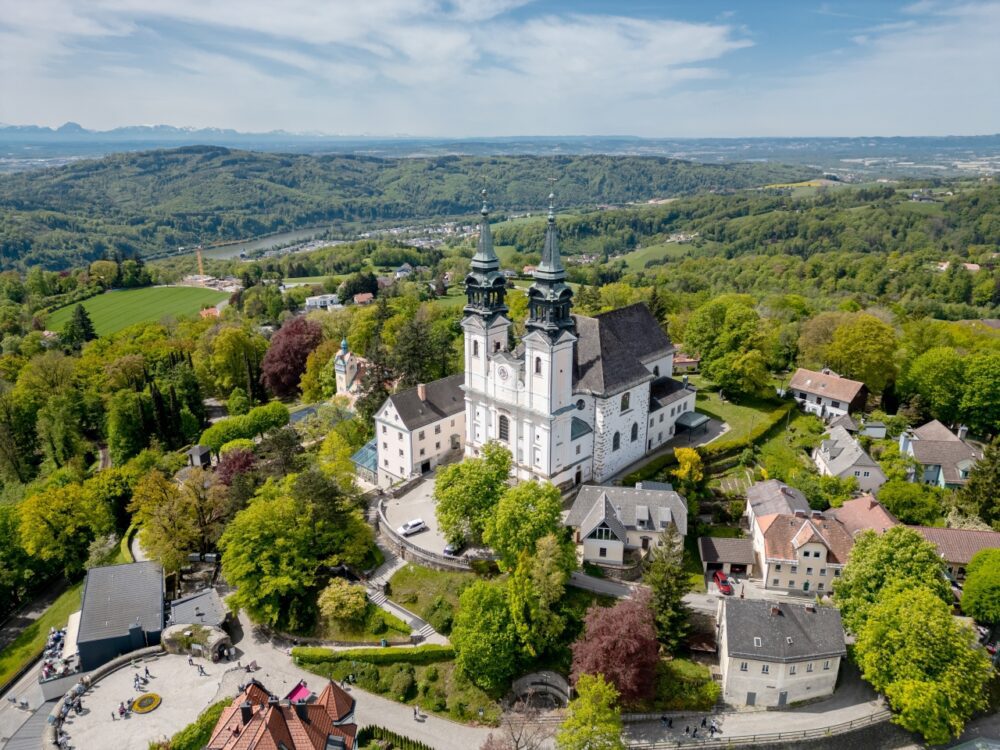
For one of the best panoramic views of Linz, Pöstlingberg Hill is the place to go. Located just outside the city center, it offers breathtaking views over Linz and the Danube, as well as a charming pilgrimage church and an old-fashioned mountain railway that takes you to the top. The ride itself is a highlight, as it’s one of the steepest adhesion railways in the world.
I took the historic Pöstlingbergbahn up to the hill, and as the train climbed higher, the view just kept getting better. At the top, I found a peaceful spot near the church to take in the scenery while enjoying a slice of Linzer Torte. Whether you visit for the views, the history, or just a quiet escape from the city, Pöstlingberg is one of Linz’s most rewarding attractions.
6. Home to the Famous Linzer Torte – The Oldest Cake Recipe in the World
Linz is famous for the Linzer Torte, a delicious tart made with buttery dough, ground nuts, and a layer of fruit jam, usually topped with a lattice crust. It’s considered the oldest-known cake recipe in the world, dating back to the 1600s. Visiting Linz without trying a slice would be like going to Naples and skipping pizza.
I stopped at a traditional bakery and ordered a piece of Linzer Torte with a cup of coffee. The combination of sweet and slightly tangy flavors, along with the crumbly texture, was perfect. It’s a simple but delicious dessert that reflects the culinary heritage of the region. If you have a sweet tooth, trying an authentic Linzer Torte is a must.
7. A Relaxed and Less Touristy Atmosphere
Unlike Vienna and Salzburg, which can feel crowded with tourists, Linz has a much more relaxed and local atmosphere. While it has plenty to offer visitors, it doesn’t feel overly commercialized or packed with souvenir shops. Instead, it feels like a city where locals go about their daily lives, making it a great place to experience Austria in a more authentic way.
I loved how easy it was to find a quiet café or a peaceful park, even in the middle of the city. The lack of overwhelming crowds made exploring much more enjoyable, whether I was wandering through the Old Town or visiting a museum. If you’re looking for an Austrian city with a slower pace and fewer tourists, Linz is a great alternative to the more famous destinations.
8. Great Connectivity and Day Trip Opportunities

Linz is well-connected by train and road, making it a great base for exploring other parts of Austria and even neighboring countries. It’s located roughly halfway between Vienna and Salzburg, making both cities easy to reach in about an hour by train. The Wachau Valley, a beautiful wine region along the Danube, is also within easy reach.
I took a quick train ride to Steyr, a charming medieval town with beautiful half-timbered houses and a scenic riverside setting. It was an easy and rewarding day trip, and I could see why Linz is a great base for travelers looking to explore different regions without the hassle of constantly changing hotels.
9. A Commitment to Sustainability and Green Spaces

Linz has made significant efforts to become a greener and more sustainable city. It has plenty of parks, tree-lined streets, and cycling paths, making it easy to get around without relying on cars. The city’s eco-friendly initiatives include a strong focus on renewable energy and green urban planning.
I rented a bike and explored the Donaupark, a beautiful riverside park with cycling trails, picnic areas, and scenic spots along the Danube. The fresh air and open space made it a perfect break from sightseeing, and I appreciated how easy it was to explore the city in an environmentally friendly way.
10. A City That is Always Evolving
Linz is a city that isn’t stuck in the past—it’s constantly evolving and embracing change. Whether it’s through modern architecture, digital art, or urban renewal projects, the city has a forward-thinking mindset that makes it feel fresh and exciting. It’s not a city that relies solely on history to attract visitors, but one that actively shapes its future.
I was impressed by how much Linz invests in innovation, from its smart urban planning to its focus on technology and sustainability. It feels like a city that’s always looking ahead, making it an exciting place to visit for those who appreciate destinations that blend tradition with progress.
Cons – Things You Should Consider When Visiting Linz
1. Linz Lacks the Romantic and Imperial Charm of Vienna and Salzburg
While Linz has a fascinating mix of old and new, it doesn’t have the same grand, fairy-tale-like atmosphere as Vienna or Salzburg. The city lacks the imperial palaces, grand concert halls, and overwhelmingly picturesque streets that many travelers associate with Austria. While the Old Town is charming, some areas of Linz feel more industrial and modern, which may not be what visitors expect from an Austrian city.
I noticed this contrast while walking around the city center. While the Hauptplatz and Old Town had their fair share of historic beauty, other parts of the city felt more functional and business-like. Some of the post-war architecture is plain compared to the ornate buildings of Vienna or the picture-perfect scenery of Salzburg. If you’re looking for a city that feels like a step back in time, Linz might not match those expectations.
2. The Weather Can Be Gray and Unpredictable
Linz has a more northern location compared to Austria’s alpine regions, and while summers can be warm and pleasant, the city is known for having cloudy, gray, and sometimes rainy weather, especially in autumn and winter. The Danube region can also experience fog, which sometimes lingers well into the afternoon.
I visited in late October, and while I had some sunny moments, there were also several days where the sky remained overcast, making the city feel a bit less vibrant. Unlike alpine towns where snowfall makes everything look magical in winter, Linz’s winter months can feel dreary rather than charming. If you’re visiting outside of spring or summer, be prepared for the possibility of dull skies and chilly weather.
3. Linz is More of a Business and Industry Hub Than a Tourist Destination
Linz has a strong economy and is known for its industries, including steel production and technology, which give it a different atmosphere compared to Austria’s more tourism-focused cities. While the city has made major efforts to rebrand itself as a cultural and tech hub, parts of it still feel business-oriented rather than designed for visitors.
I noticed this when walking through some of the newer parts of the city, where large office buildings and industrial areas lacked the charm of Austria’s more touristy destinations. The city is very livable and modern, but it doesn’t always have the same vacation-like feel that places like Salzburg or Hallstatt offer. If you’re expecting a city built entirely around tourism, Linz might not be as engaging as other Austrian cities.
4. The Nightlife and Evening Entertainment is Limited
While Linz has a good selection of bars, theaters, and cultural events, its nightlife is much quieter compared to Vienna, Graz, or even Salzburg. There are some great places to grab a drink, especially in the Old Town and the Lend district, but if you’re looking for a city with a buzzing club scene or late-night energy, Linz may not be the best choice.
I went out on a Friday night expecting a lively atmosphere, but outside of a few bars and student hangouts, the city felt relatively quiet. Many restaurants and cafés close earlier than expected, and while there are some nightclubs, they don’t have the same variety or international reputation as in bigger cities. If nightlife is an important part of your travels, Linz might not offer enough to keep you entertained after dark.
5. Fewer Iconic Landmarks and Attractions Compared to Other Austrian Cities
While Linz has interesting museums, beautiful river views, and some unique cultural experiences, it lacks the world-famous landmarks that draw visitors to Vienna, Salzburg, or Innsbruck. There’s no Schönbrunn Palace, no Mozart birthplace, and no towering alpine peaks surrounding the city. While Linz has charm and culture, it doesn’t have the same instantly recognizable attractions that make other Austrian cities must-visit destinations.
I enjoyed exploring Linz, but after two days, I felt like I had seen most of the main attractions. While places like the Ars Electronica Center and the Pöstlingberg were fantastic, they don’t have the same global appeal as Vienna’s Hofburg Palace or Salzburg’s Hohensalzburg Fortress. If you’re looking for a city packed with bucket-list landmarks, Linz might not be as captivating as Austria’s more famous destinations.
When to Visit Linz
The best time to visit Linz is during spring (April to June) or early autumn (September to October). These months offer mild weather, blooming parks, and the ideal conditions for exploring Linz’s mix of modern art and historic sites. In summer (July and August), Linz hosts the lively Pflasterspektakel street art festival, though temperatures can be warm and crowds a bit larger. For those drawn to winter magic, December transforms the city into a holiday haven with Christmas markets lighting up the Old Town and festive treats like mulled wine on offer—just be prepared for the chill!
How to Get to Linz
Linz Airport (LNZ) is about 12 kilometres from the city centre and is serviced by Austrian Airlines and Lufthansa, connecting primarily to Vienna and Frankfurt. From the airport, buses run regularly to Linz’s main train station, and taxis or rideshare options make it a quick trip as well. For those travelling from further afield, Vienna Airport (VIE) offers more international flights and is about 1.5 hours by direct train to Linz on the OBB rail network. Linz is well-connected by train, with frequent routes from Salzburg, Vienna, and Munich offering a scenic way to arrive.
Where to Stay in Linz
Linz offers a range of accommodation in distinct neighbourhoods:
- Luxury: Altstadt (Old Town) – Stay near the historic sights, like the Linz Castle and Main Square. Hotel am Domplatz and Austria Trend Hotel Schillerpark both provide upscale amenities and are just steps from key attractions.
- Mid-range: Urfahr – This riverside district just north of the Danube has a local, laid-back feel with easy access to the city centre. Check out options like ARCOTEL Nike Linz and Harry’s Home Linz for comfort and value.
- Budget: Franckviertel – Close to the train station and within reach of the city’s top sites, Franckviertel offers affordable stays like ibis Linz City and Park Inn by Radisson Linz, great for budget-conscious travellers who want convenience.
Getting Around Linz
Linz is easy to navigate, with a compact Old Town best explored on foot. For longer distances, the Linz AG Linien network operates trams and buses throughout the city. A single ticket or day pass is affordable and covers all city transport, making it a good option if you plan to explore multiple areas. LINZbike offers a convenient bike-sharing scheme with stations around the city, ideal for those who enjoy a scenic ride along the Danube. For an alternative view, try the Pöstlingbergbahn tram up to Pöstlingberg Hill—a local favourite for panoramic views.
How Long to Spend in Linz
Two days in Linz is usually enough to explore the main highlights, including Ars Electronica Center, Lentos Art Museum, and the historic Old Town. With an extra day, you could dive deeper into the region’s culture with a visit to St. Florian’s Monastery or take a scenic Danube river cruise. Linz also has an intriguing food scene and plenty of riverside cafes, so consider three days if you prefer a relaxed pace that allows time to soak in the local atmosphere.
Conclusion
So, is Linz worth visiting? Definitely! With its mix of historic landmarks, cutting-edge art and technology, and a vibrant riverside setting, Linz offers a travel experience that’s both inspiring and unexpected. While it doesn’t have the same tourist buzz as Vienna or Salzburg, that’s part of its charm—it feels authentic and welcoming. If you’re ready to explore a city that celebrates both its past and its future, start planning your trip to Linz today. It’s a destination you won’t want to miss!
